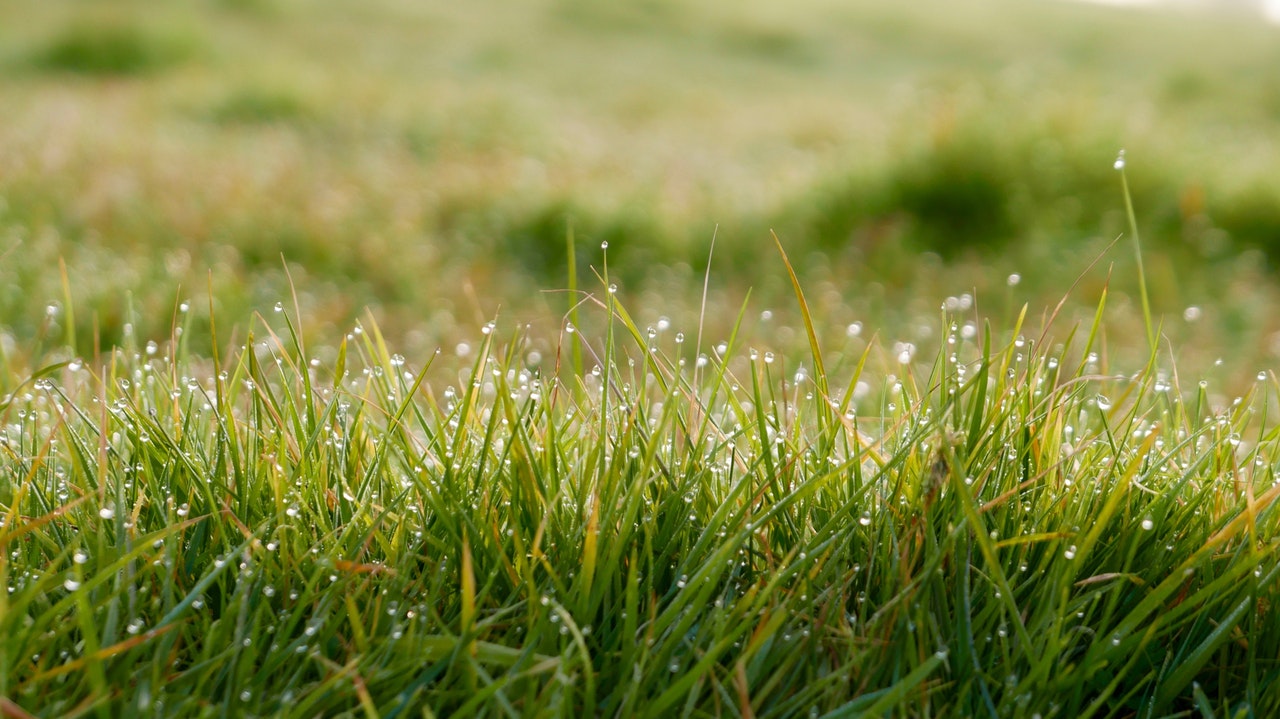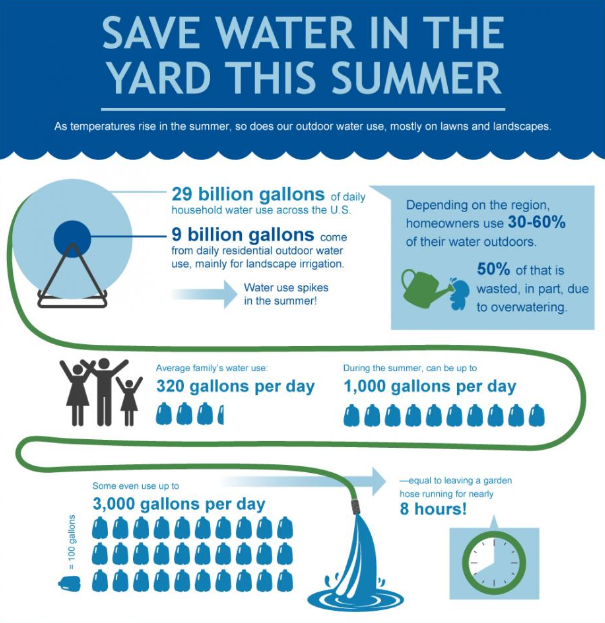By Ken Kramer, Volunteer Water Resources Chair
(Editor's Note: This piece was originally published on the Texas Living Waters blog).

Stepping out on the porch of our farmhouse on an already-hot May afternoon, looking out at our yard, I’m happy that we don’t have a lush outdoor landscape that begs for water in the dog days of a Texas summer. There’s no need to get out in the broiling sun to give thirsty plants a drink of water.
But many Texans do have extensive lawns and luxuriant landscapes that they try to maintain throughout the year. Whether or not those landscape choices are wise ones for our state, a lot of people go to great lengths to keep them green. I’ve seen an elderly neighbor of my late parents, in a small city near our country home, run his sprinkler system even in the heat of a summer afternoon. He once told me that he had a $200 monthly water bill! By contrast, my parents – ever the frugal ones – probably never had water bills of more than about $20.
Expense aside, the really sad thing is that a lot of the water applied to Texas landscapes during the summer is wasted. Numerous studies have shown that people have a tendency to “over-water” – in other words, they often put more water on their turf and plants than is actually needed to keep them healthy. For example, one study done by Sam Houston State University researchers reviewed three years of water-use data in a Huntsville neighborhood and found that almost 100 percent of the residents over-irrigated their landscapes, and at least 12 percent of the residents over-irrigated by at least 100,000 gallons in at least one month during the study period.
Even during hot and dry Texas summers, landscapes only need about an inch of water per week, whether from rain or irrigation. That’s why the Texas Living Water Project team recommends that Texas communities adopt ordinances that limit outdoor watering to twice per week or less. One valuable approach to further strengthening these ordinances is to also include time-of-day watering restrictions.
Outdoor watering during the daytime in the hottest months of the year is highly inefficient. Watering in the early morning or in the evening is more efficient than applying water in the middle of the day or in the afternoon.
The U. S. Environmental Protection Agency’s WaterSense publication “When It’s Hot” notes that: “Experts estimate that 50 percent of the water we use outdoors goes to waste from evaporation, wind, or runoff due to overwatering.” Evaporation rates may be highest during the hottest part of the day, depending upon humidity levels and other factors.

High rates of evaporation and resultant waste of water have led an increasing number of Texas cities and water districts to place “time-of-day” outdoor watering limitations on their customers – allowing watering only in the evenings or early mornings – even when they are not in drought. The Texas Water Conservation Scorecard in 2016 found that Austin, College Station, Conroe, Dallas, Fort Worth, Lubbock, New Braunfels, San Antonio, and Wichita Falls are among the more than 40 cities or districts in the state that have adopted these limitations on an ongoing basis.
The specifics vary from one area to another. Some of the cities implement the limitations year-round, others just during the warmer months (such as April or June through September or October). A common time frame for limiting outdoor watering is from 10 AM to 6 PM, but various cities have different starting and ending times. Most cities appear to apply the limitation only to in-ground sprinkler systems but a few apply it to hand-held hoses also.
Even if your city or water district does not impose time-of-day outdoor watering limitations, please consider following the practice of watering only in the early morning or evening (there are pros and cons to either option, so consult local landscape experts for advice). Keep in mind that it’s not just the timing of applying water to landscapes, but also the length of time and frequency of which the water is applied, that determines the amount of water used. Watering when evaporation rates are lowest doesn’t mean that you should feel empowered to water longer or more often.
If you would like to see your community adopt outdoor watering ordinances that include time-of-day watering schedules, so that everyone is doing their share to save water and stretch your area water supplies, consider contacting your water utility or local officials to encourage them to check out what other communities in Texas are doing to enhance efficient outdoor water use. Tackling this issue may help your utility (and you, their rate-paying customer) avoid the costs of having to expand their water system, or at least postpone the need to do so. Water systems are usually sized to meet “peak demand,” which in Texas often translates into the highest anticipated use during the summer, and outdoor water use is a significant factor in driving that demand.
There are many factors, of course, that determine how much water is used for outdoor landscapes, including plant and turf choices, soil conditions, and irrigation practices. Decisions about the frequency and timing of outdoor watering are only one factor. If you want more information about how to save water outdoors, Texas AgriLife Extension has an excellent online guide to efficient use of water in gardens and landscapes, Earth-Kind® Landscaping.
Whatever steps you take to reduce outdoor water use will be important in helping your community and the state meet any current or future water challenges. Preventing water waste by not irrigating your lawn or plants during the heat of the day is one such step. Moreover, it’s one that makes sense and can save you a lot of cents.